Until c1994, the older part of this site had been the well-known Stag and Pheasant. Built in 1912, it replaced a long-standing pub of the same name which had traded on this corner site since the early 1800s.
Photographs and text about The Palace Electric Theatre.
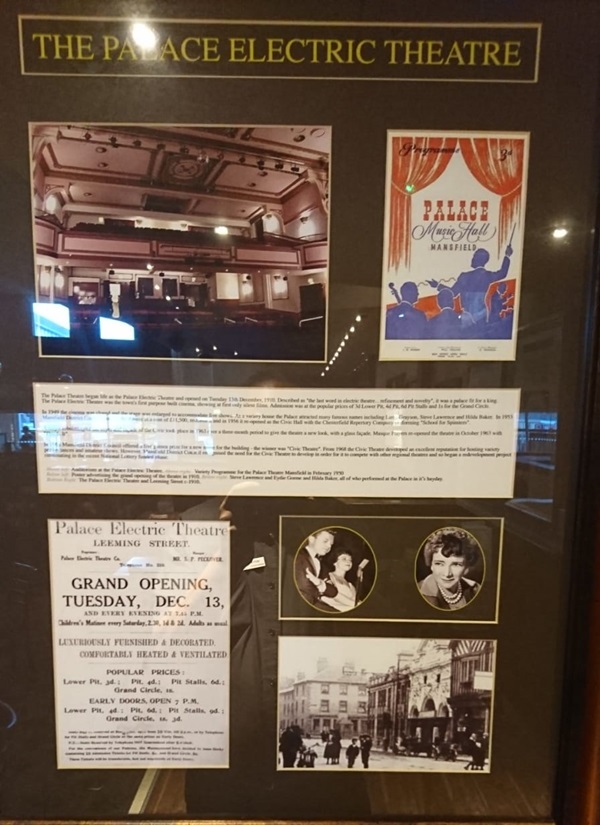
The text reads: The Palace Theatre began life as the Palace Electric Theatre and opened on Tuesday 13 December 1910. Described as “the last word in electric theatre… refinement and novelty”, it was a place fit for a king. The Palace Electric Theatre was the town’s first purpose built cinema, showing at first only silent films -admission was at the popular prices of 3d Lower Pit, 4d Pit, 6d Pit Stalls and 1s for the Grand Circle.
In 1949 the cinema was closed and the stage was enlarged to accommodate live shows. As a variety house the Palace attracted many famous names including Larry Grayson, Steve Lawrence and Hilda Baker. In 1953 Mansfield District Council bought the theatre at a cost of £11,500, restored it and in 1956 it re-opened as the Civic Hall with the Chesterfield Repertory Company performing School for Spinsters.
A major rebuilding of the foyer and façade of the Civic took place in 1963 over a three-month period to give the theatre a new look, with a glass façade. Masque Players re-opened the theatre in October 1963 with This is it.
In 1968 Mansfield District Council offered a five guinea prize for a new name for the building – the winner was Civic Theatre from 1968 the Civic Theatre developed an excellent reputation for hosting variety performances and amateur shows. However, Mansfield District Council name recognised the need for the Civic Theatre to develop in order for it to compete with other regional theatres and so began a redevelopment project culminating in the recent National Lottery fund phase.
Above left: Auditorium at the Palace Electric Theatre
Above right: Variety programme for the Palace Theatre Mansfield in February 1950
Below left: Poster advertising the grand opening of the theatre in 1910
Below right: Steve Lawrence and Eydie Gorme and Hilda Baker, all of who reformed at the Palace in its heyday
Bottom right: The Palace Electric Theatre and Leeming Street, c1910.
Photographs and text about the Mansfield Workhouse.
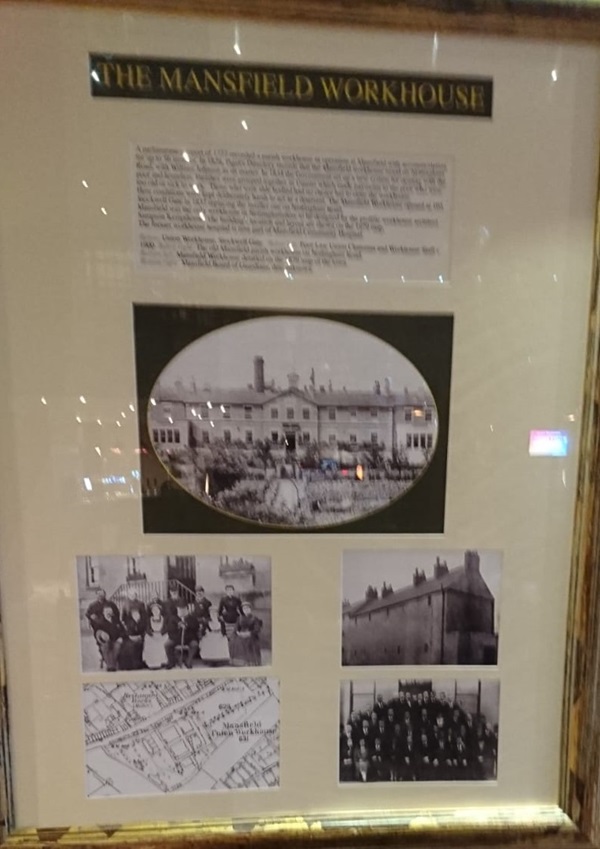
The text reads: A parliamentary report of 1777 recorded a parish workhouse in operation at Mansfield with accommodation for up to 56 inmates. In 1828, Pigot’s Directory records that the Mansfield workhouse stood on Nottingham Road, with William Johnson as its master. In 1834 the government set up a new system for dealing with the poor and homeless. Parishes were grouped together in unions which made payment to the poor who were too old or sick to work. Those who were able bodied had no choice but to enter the workhouse. Here conditions were kept deliberately harsh to act as a deterrent. The Mansfield Workhouse opened at 105 Stockwell Gate in 1837 replacing the smaller one on Nottingham Road.
Mansfield was the only workhouse in Nottinghamshire to be designed by the prolific workhouse architect Sampson Kempthorne. The building’s location and layout are shown on the 1879 map. The former workhouse hospital is now part of Mansfield Community Hospital.
Below: Union Workhouse, Stockwell Gate
Below left: Poor law union chairman and workhouse staff c1900 Below right: The old Mansfield parish workhouse on Nottingham Road
Bottom left: Mansfield workhouse detailed on the 1879 map of the town
Bottom right: Mansfield Board of Guardians, date unknown.
Photographs and text about major Hayman Rooke and ‘The Major Oak’.
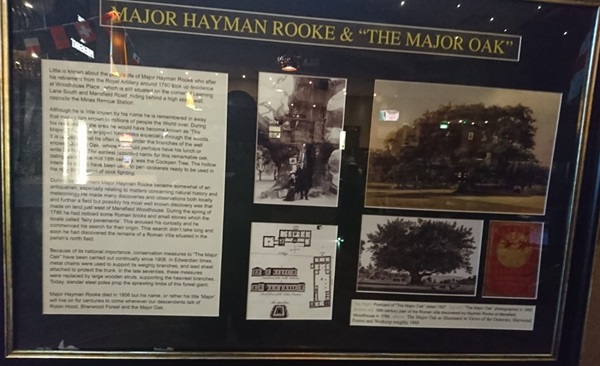
The text reads: Little is known about the private life of major Hayman Rooke who after his retirement from the Royal Artistry around 1780 took up residence at Woodhouse Place, which is still situated on the corner of Learning Lane South and Mansfield Road, hiding behind a high stone wall, opposite the Mines Rescue Station.
Because of its national importance, conservation measures to ‘The Major Oak’ have been carried out continually since 1908. In Edwardian times, metal chains were used to support its weighty branches, and lead sheets attached to protect the trunk. In the late seventies these measures were replaced by large wooden struts, supporting the heaviest branches. Today slender steel poles prop the sprawling limbs of the forest giant.
Major Hayman Rooke died in 1806 but his name, or rather his title ‘major’ will live on for centuries to come whenever our descendants tale of Robin Hood, Sherwood Forest and the Major Oak.
A photograph of the Mansfield ceremonial royal visit, 19 December 1896.
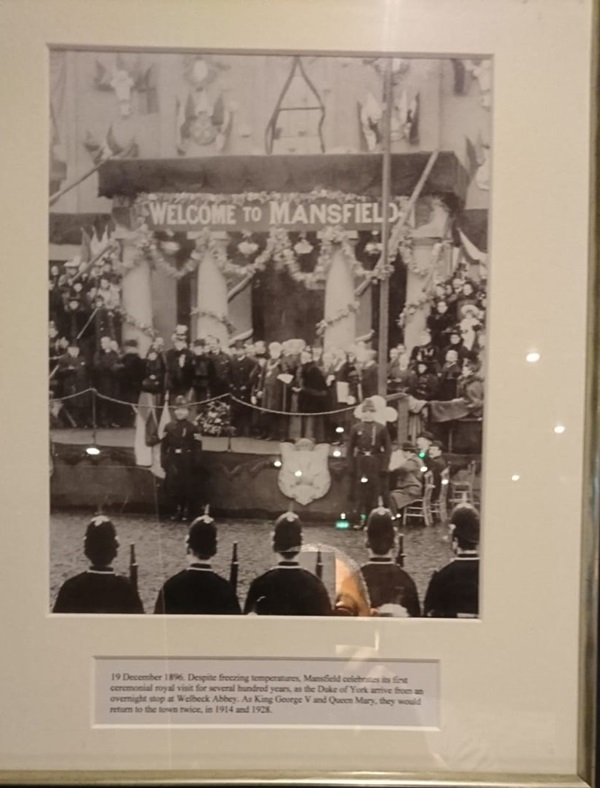
Despite freezing temperatures, Mansfield celebrates its first ceremonial royal visit for several hundred years, as the Duke of York arrived from an overnight stop at Welbeck Abbey. As King George V and Queen Mary, they would return to the town twice, in 1914 and 1928.
A view looking down Leeming Street in the 1930s, with the Horse & Jockey on the left.
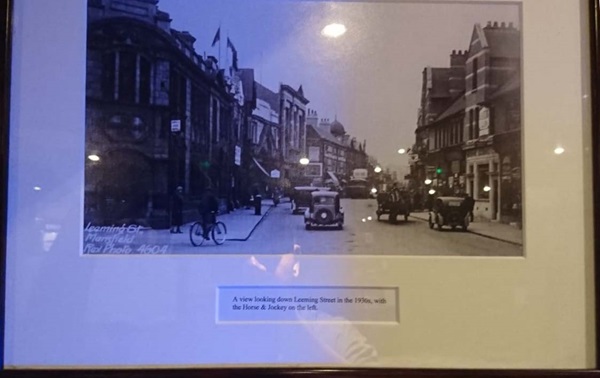
External photograph of the building – main entrance.
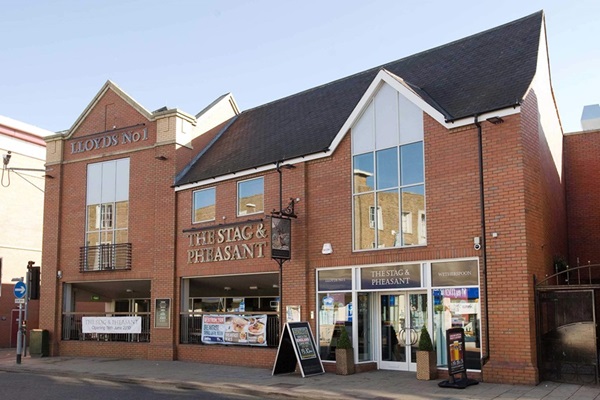
If you have information on the history of this pub, then we’d like you to share it with us. Please e-mail all information to: pubhistories@jdwetherspoon.co.uk